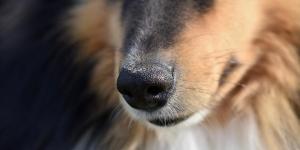Do Dogs Have a Belly Button?



See files for Dogs
Known as an umbilicus in veterinary medicine, the belly button is the point at which the umbilical cord was previously attached to the mother during gestation. The umbilical cord is largely associated with placental mammals, meaning the mother feeds their young internally via their placenta. For this reason, it is common for some guardians to ask do dogs have a belly button?
AnimalWised can reveal that dogs do have a belly button. Canines are placental mammals which use the umbilical cord to feed. We explain more about what types of animals have belly buttons, where it is located, why they have them and some of the potential problems dogs can face due to having an umbilicus.
Do all mammals have belly buttons?
The umbilical cord is a small tube that facilitates the transport of oxygen and nutrients to a mother’s offspring during the gestation period. After birth, this cord is chewed off by the mother or falls off naturally, as it is no longer necessary. The place where the cord was once present is closed, thereby leaving a ‘mark’ otherwise refereed to as a navel or belly button. As we already know, all humans have belly buttons. Although not all do, there are some animals that also have belly buttons.
What animals have belly buttons?
Animals that have belly buttons include:
- Mammals: mammals are warm-blooded vertebrates that feed on their mother’s breast milk when born. These mammals include giraffes, bears, kangaroos, mice, dogs and others and all have belly buttons. So, if you’re wondering, ‘‘Do cats have belly buttons?’’ The answer is yes, they do.
- Viviparous animals: viviparous animals are those born from an embryo that develops after fertilization in the womb. In the womb, these animals receive nutrients and oxygen through an umbilical cord. Although many animals with navels are viviparous, not all viviparous animals have navels.
- Placental viviparous animals: all placental viviparous animals have a navel, that is, those animals whose embryo develops in the mother’s uterus: while being fed by the placenta through the umbilical cord.
Which animals don’t have belly buttons?
Marsupials (pouch mammals) and platypus’ (egg-laying mammal) are the only mammals that do not have belly buttons. For more, we recommend reading our article where we list examples of mammals that lay eggs, i.e. monotreme animals.
It important to know that belly buttons, present on placental viviparous animals, are very small and almost imperceptible. For more about the feeding of these animals within the uterus through an umbilical cord, we recommend reading our article where we look at the difference between viviparous animals and mammals.

Do dogs have belly buttons?
Yes, dogs have belly buttons. As we’ve already mentioned, a dog’s umbilicus is the point at which an umbilical cord was previously connected the placenta to the puppy.
After giving birth, the mother slowly cuts the umbilical cord with her teeth and then eats it. Afterwards, the leftover residue dries and falls off of the puppy’s body naturally. This process may take a few days. In the following weeks, the skin in this area will begin to heal to the point that it may become difficult to see.
In some cases, the mother may cut the cord too close to the puppy’s skin, resulting in a wound or belly button infection. In this case, we recommend consulting a veterinarian immediately in order to treat this wound appropriately. In some cases, surgical intervention may be required.
For more about dog labor facts, we recommend reading our article on signs a dog is about to give birth.
Where is my dog’s belly button?
A dog’s belly button is located on a dog’s stomach under the rib cage. The umbilicus in dogs is usually located here and visible as a small flat scar. It can sometimes be difficult to observe, especially in the case of dogs with a lot of belly fur.

Dog's belly button is sticking out
Once the umbilical cord has been removed or fallen off, the umbilicus usually heals on its own. In the vast majority of cases, we do not need to do anything to help with this belly button healing process. Some puppies may have a more pronounced belly button than others, appearing as an ‘outie’ rather than an ‘innie’. This is normal and shouldn't cause any health problems once they have matured.
Although rare, there are some reasons why a puppy might have a problem with their belly button. If the puppy has an outie that is particularly pronounced, it is possible they have developed an umbilical hernia. This occurs when the abdominal wall does not fully close around the umbilicus. This could involve the intestine, fat or other tissues in the abdomen. If a portion of the intestine is caught, it can become a strangulated hernia.
Symptoms of umbilical hernia in dogs include:
- Evident pain
- Vomiting
- Decrease in a puppy’s appetite
- Malaise
- Depression
Although there is not usually an immediate threat to the puppy's well-being, it should be addressed in case of complications such as strangulated hernias. There is a genetic predisposition to this problem, so it can happen in some dogs more than others.
As we’ve mentioned, some dogs may require intervention for these hernias (always under supervision of a veterinarian). If your dog has undergone surgery to remove an umbilical hernia, we recommend:
- Taking slow and quiet walks, as your dog will need time to heal fully and may be in pain.
- Offering your dog quality food.
- Preventing your dog from licking the wound, so they do not accidentally remove the stitches.
- Regularly check that your dog’s wound has not opened.
- Clean the wound frequently (according to your veterinarian's instructions). Remember to be gentle and avoid causing your dog any discomfort or additional pain.
- Eliminates additional stresses, be that mental or environmental. Offer your dog a quiet and safe space to heal.
In addition to having an outie or an umbilical hernia, there are other reasons why a dog's belly button is sticking out:
- Infection: occurs mostly when the dog is a puppy and their umbilicus is healing. When this happens, bacteria can enter the wound site and result in infection. Swelling, redness and purulent discharge may occur if the infection progresses. Since puppies have low immunity, this can be a more dangerous problem than for other dogs and will require immediate veterinary treatment. Antibiotics and wound cleaning are usually required.
- Bleeding: this occurs when there is delayed healing. The belly button wound does not heal and will stay moist for a prolonged period, making them more vulnerable to infection. This could be due to poor nutrition or a congenital disease which makes the puppy more vulnerable to healing. In adult dogs, their belly button may bleed if they have caught it on something or received some kind of trauma to the abdomen.
- Umbilical granuloma: this is another result of delayed healing where extra tissue grows to help the wound heal. It can be exacerbated by licking, so we need to ensure the mother or other puppies are not licking this area excessively. Learn more with our article on lick granuloma in dogs.
- Dermatitis: whether due to poor hygiene, infection or even parasites, it is possible there could be swelling of the skin around the umbilicus. This dermatitis is unlikely to be located only on the belly button, but it is possible we only see this area because it is sticking out. You will need to speak to a veterinarian for treatment.
It is very important we monitor a puppy's belly button healing as they develop. If there are any issues, we should speak to a veterinarian immediately. Once healed, it is uncommon for adult dogs to have problems with their umbilicus. If an adult dog's belly button is sticking out, we need to be careful in case there are other issues such as an abscess in the dog's skin.
If you want to read similar articles to Do Dogs Have a Belly Button?, we recommend you visit our Facts about the animal kingdom category.







